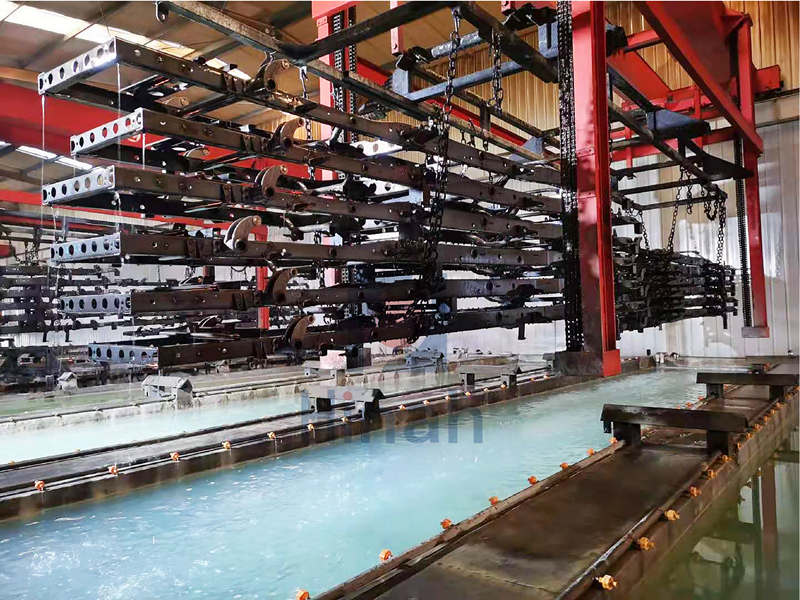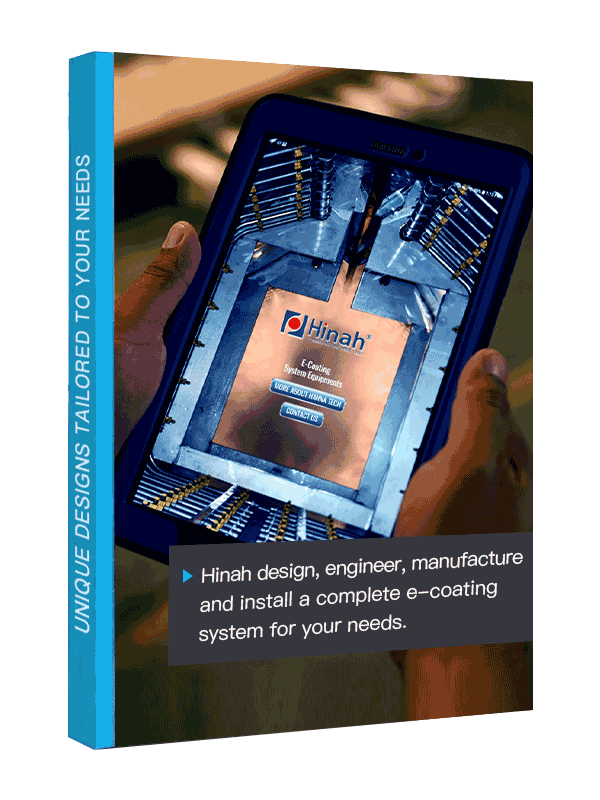Curing Oven
Energy efficient heat treatment solution.
We are committed to providing high-performance, high-efficiency curing ovens to meet your coating process needs.
Curing ovens are an important part of your coating equipment and are used to cure and dry coatings to improve adhesion, hardness, and durability. Our curing ovens offer the following features and advantages:
- Precise temperature control.
- Uniform hot air circulation.
- Fast curing speeds.
- Energy saving.
- Reliability and stability.
- Customised options.
As a dedicated supplier of spraying equipment, we are committed to providing our customers with quality products and comprehensive after-sales service. Our experienced engineering and technical support teams can provide you with customized solutions and professional technical support.


Proven
30 years of experience providing proven equipment
Lifetime Service
Maintenance is more important than repair
Maximum Efficiency
Production line capacity fully matches demand without wasting any resources
Product Description
There are several common types of curing oven equipment used in electrophoretic coating production, including camel-back curing ovens, tunnel-type curing ovens, and box-type curing ovens. Each type of curing oven has unique features and individual advantages.
Common forms of energy used in curing ovens can be electrical, natural gas, diesel, etc. Common types of heating for curing ovens include hot air curing ovens, infrared curing ovens, and ultraviolet curing ovens.
Regardless of which curing oven type you choose, we can provide customizable and efficient equipment that:
- High efficiency: Curing ovens can cure coatings in a shorter period, increasing production efficiency.
- Uniformity: By optimizing the heating method, the oven achieves uniform curing of the coating, ensuring consistent product quality.
- Stability: Our curing ovens use high-quality materials and reliable components to ensure long and stable operation and high reliability.
- Flexibility: Depending on your production needs, we offer a wide range of sizes and configurations of curing ovens to meet the processing requirements of different sizes, shapes, and coating types.
- Technical support: Our experienced technical team can provide you with comprehensive technical support, training, and after-sales service to ensure you take full advantage of the curing oven’s performance.
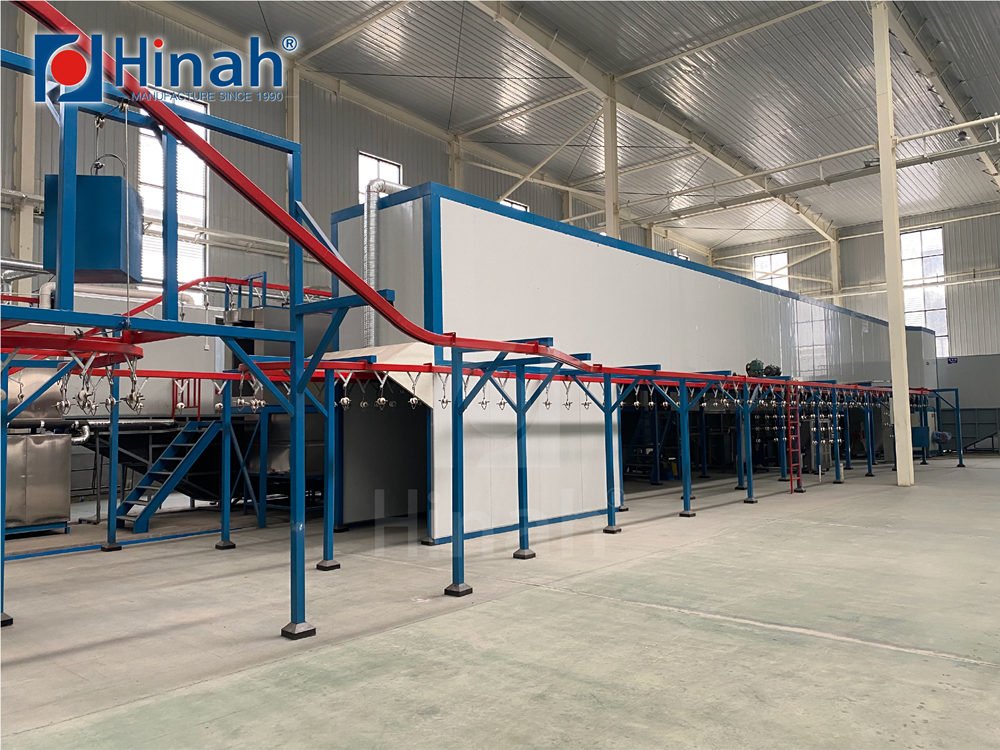
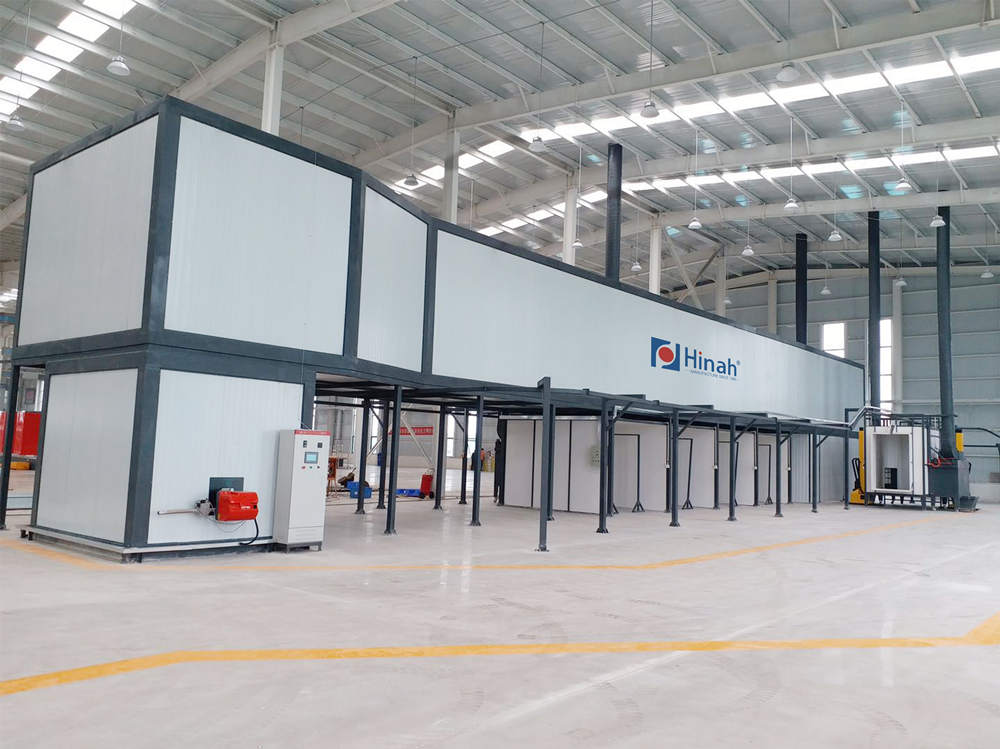
Hot air curing ovens:
Type of heating: Hot air curing ovens cure by heating air or gas and conducting it to the surface of the coating.
Features and Advantages:
- Uniform heating: Hot air curing ovens use forced convection heating to achieve a more uniform temperature distribution, ensuring that the coating is cured uniformly throughout the oven cavity.
- Flexibility: The temperature and time can be adjusted according to the curing requirements of different coatings to meet the needs of different products.
- Wide range of applications: suitable for a variety of substrates and coating types, including liquid coatings and powder coatings.
Infrared curing ovens:
Heating type: Infrared curing ovens use the principle of infrared radiation heating to transfer heat energy to the surface of the coating for curing through infrared radiation.
Features and Benefits:
- Fast heating: infrared curing ovens have the characteristics of rapid temperature rise and high thermal efficiency, which can quickly transfer heat energy to the coating surface and speed up curing.
- Energy saving and high efficiency: Since infrared rays act directly on the coating surface, energy loss, and waste are reduced and energy utilization efficiency is improved.
- Flexibility: It can be adjusted according to the thickness and material of the coating, flexibly adapting to different curing needs.
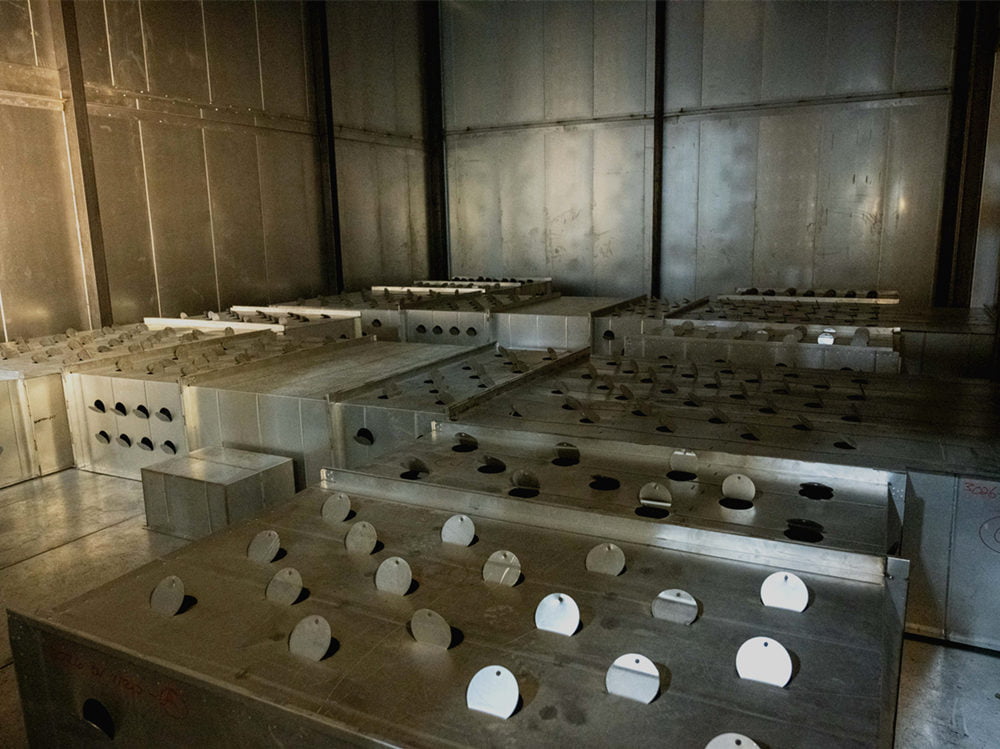
Hot air curing ovens
Hot air curing ovens cure by heating air or gas and conducting it to the surface of the coating. More uniform temperature distribution.
Flexibility, Uniform heating, Wide range of application

Infrared curing ovens
Infrared curing ovens use the principle of infrared radiation heating to transfer heat energy to the surface of the coating for curing through infrared radiation.
Fast heating, Energy saving, High efficiency
Design details:
Power type: CNG/LPG/Diesel/Electric
- Limited heat loss with air curtain
- Temperature uniformity within ±3°C
- High safety with automatic ventilation before ignition of the heat source connected to the vulcanization tunnel, eliminating hidden safety hazards
- Insulated panel structure with inserts, seamless docking, heat bridge transfer, and other technologies
- Oil burner type with the correct design of the heat ventilation system to achieve a perfect balance of air circulation and keep the furnace temperature stable.
- Gas burner type with 100% heat flowing into the furnace chamber for high efficiency and no waste.
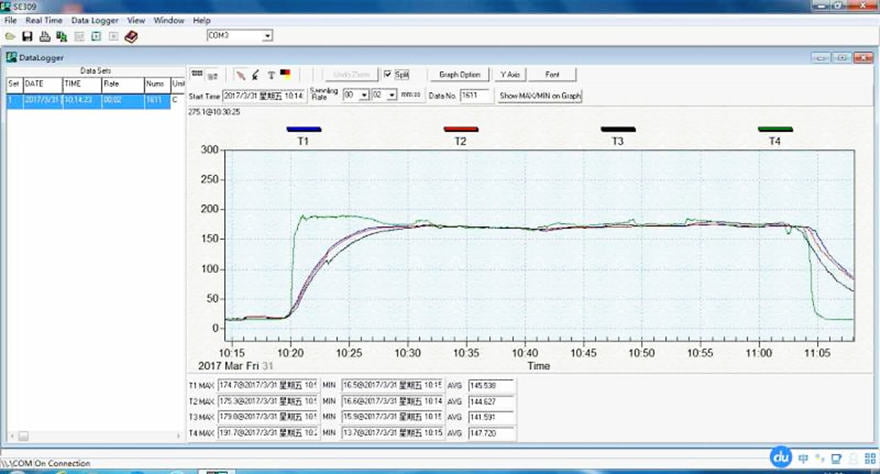
There are several common types of curing oven equipment used in electrophoretic coating production, including camel-back curing ovens, tunnel curing ovens, and box-type curing ovens. Each type of curing oven has unique features and respective advantages, which I will introduce to you one by one as follows:
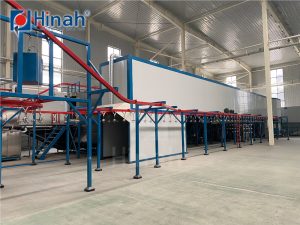
Camel Curing Ovens
Vertical layout with a hump-shaped cavity, which takes up relatively little space and is suitable for use in limited spaces.
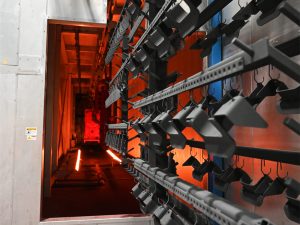
Tunnel curing ovens
Continuously transfer workpieces to the curing area via a conveyor system, making them suitable for high-volume production and continuous production lines.
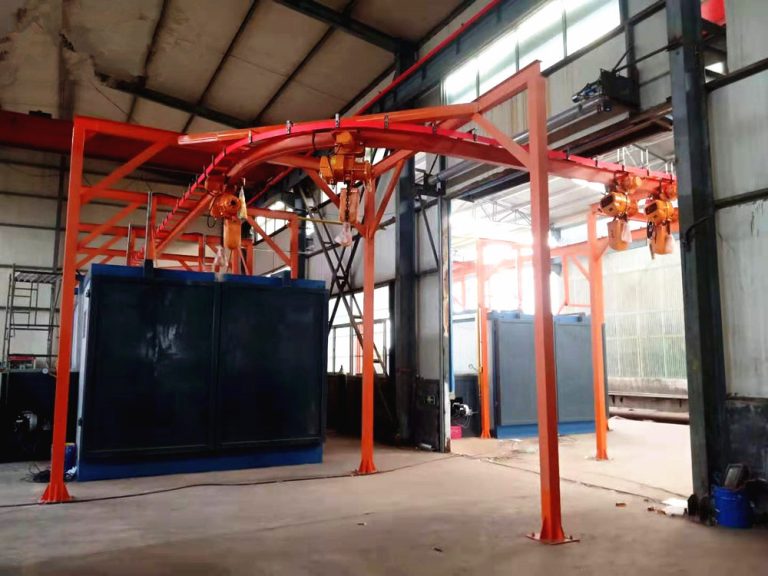
Batch Curing Ovens
Simple in construction, suitable for curing needs of various product sizes and shapes, and easy for loading and unloading workpieces.
Camel Curing Ovens:
Features and Advantages:
- Compact structure: Camel curing ovens have a vertical layout with a hump-shaped cavity, which takes up relatively little space and is suitable for use in limited spaces.
- Fast heating and curing: Camel curing ovens typically have high heating power and short curing times, allowing for rapid heating and curing of the coating.
- Flexibility: Camel curing ovens are suitable for a wide range of product sizes and shapes, and the height and width of the chamber can be adjusted as needed to accommodate different workpiece requirements.
- Energy saving: Due to its compact structure and small chamber volume, camel curing ovens can use heat more efficiently and save energy.
Tunnel curing ovens:
Features and advantages:
- Continuous production: Tunnel curing ovens can continuously transfer workpieces to the curing area via a conveyor system, making them suitable for high-volume production and continuous production lines.
- Uniform heating: Tunnel curing ovens provide uniform heating in the oven cavity through an optimized hot air circulation system and heating elements to ensure consistent curing of the coating.
- Automated control: Tunnel curing ovens are often equipped with advanced automated control systems that allow precise control and monitoring of temperature, speed, and other parameters.
- Increased Productivity: Tunnel curing ovens can increase productivity and reduce production time and labor costs due to the continuous conveyor and uniform heating characteristics.
Batch Curing Ovens:
Features and advantages:
- Flexibility: Box-type curing ovens are simple in construction, suitable for curing needs of various product sizes and shapes, and easy for loading and unloading workpieces.
- Precise Control: Chamber curing ovens are typically equipped with precise temperature control and time control systems, allowing precise curing parameters to be set according to coating requirements.
- Independent operation: Each chamber curing oven is a self-contained unit that can be operated and controlled independently according to production requirements.
- Energy saving: Due to their relatively small chamber volume and independent operation, chamber curing ovens can utilize thermal energy more efficiently and achieve energy savings.
- Adaptability: Box-type curing ovens can be flexibly adjusted and expanded as needed to accommodate changes in production lines and expansion needs.
Product Images
Product Feature
- High efficiency: The curing ovens enable the coating to be cured in a short period of time, increasing production efficiency.
- Homogeneity: through optimised heating, the ovens achieve uniform curing of the coating and ensure consistent product quality.
- Stability: Our curing ovens are made of high-quality materials and reliable components, guaranteeing long periods of stable operation and a high degree of reliability.
- Flexibility: Depending on your production needs, we offer a wide range of sizes and configurations of curing ovens to meet the processing requirements of different sizes, shapes and coating types.
- Technical support: Our experienced technical team can provide you with comprehensive technical support, training and after-sales service to ensure you get the most out of your curing oven.
Need a design plan, now?
Application Case
Product Video
FAQ
Answer: Our curing ovens use advanced heating technology and an optimised hot air circulation system to achieve the required temperature quickly. The high heating efficiency ensures that the coating cures quickly and evenly, increasing productivity.
Answer: We offer a wide range of sizes and configurations of curing ovens, which can be customised to suit your needs. Whether it’s a small part or a large part, we can provide the right oven to ensure that the part is cured evenly.
Answer: We focus on the energy efficiency of our curing ovens, using efficient heating elements and optimised designs to minimise energy consumption. The design of our curing ovens is carefully optimised to make efficient use of thermal energy and to achieve energy savings.
Answer: Our curing ovens are equipped with an advanced control system that is easy to operate and has an intuitive interface. You can easily set and adjust the curing parameters to meet different coating requirements. We also offer training and technical support to ensure that you are able to operate the oven and achieve optimum curing results.
Answer: Our curing ovens are made from high quality materials and reliable components that are subjected to rigorous quality control and testing. We focus on stability and reliability to ensure long and stable operation with low failure rates, and offer comprehensive after-sales support and maintenance services.

